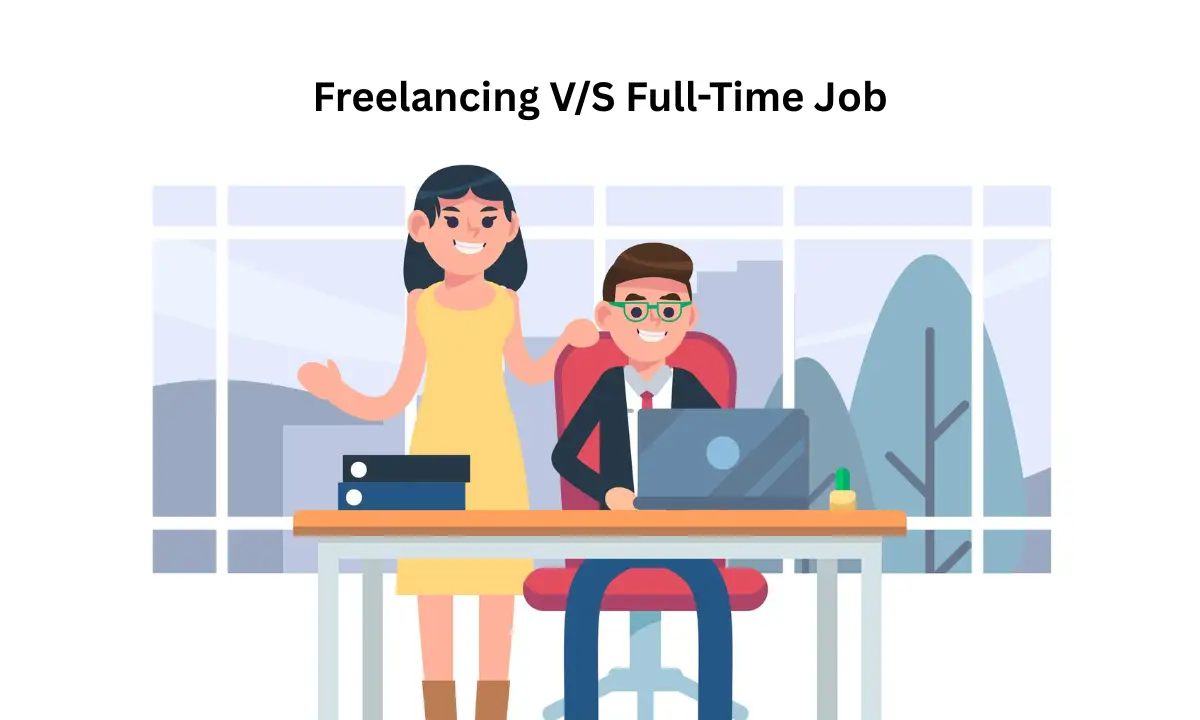In 2025 the employment scene will be different. Many people are debating freelancing against working full-time. They give their choices great thought before deciding what to do. Every choice boasts advantages and drawbacks. This decision affects work-life balance, pay, job security, and chances for career progress. We also covered full-time work and the benefits and negatives of freelancing. You can thus make wiser decisions.
Freelancing Advantages and Disadvantages
Flexibility and Freedom in Freelance Work
Full-time work provides a consistent income, and combined with a thorough benefits package including health insurance. Freelancers are free to choose their own work environments and schedules, unlike regular employees. Full-time workers have more money security, while freelancers have more freedom. This lets them create a schedule that fits their needs perfectly. This is great for anyone because it allows us to put our family, hobbies, or even travel first, even if we need to work.
The other thing is that freelancers enjoy variety, fostering continued learning and mastery. Freelancers can earn more by doing many projects, especially on sites like Upwork and Fiverr. They have freedom in choosing work, while full-time jobs give steady pay and benefits. They can choose their work and schedule more freely. Full-time jobs offer regular pay and benefits, such as health insurance. These platforms take opportunities beyond local job markets through global contact with clients.
Challenges and Risks of Freelance Work
Freelancing, however, has its fair share of downsides. Income may fluctuate from feast to famine depending on client demand. Freelancers must pay their own taxes. They also handle health insurance, retirement plans, and other costs. These expenses are usually taken care of by full-time employers. The lack of a safety net makes it more challenging to address financial insecurity.
Self-discipline helps you finish tasks on time and needs less supervision. This is another challenge in freelancing. Retaining and acquiring new clients is a challenge in its own. A freelancer must handle many tasks. Managing contracts in a busy environment can cause burnout and loneliness. This can negatively impact employee well-being.
Full-Time Work Advantages and Disadvantages
Stability and Benefits of Full-Time Employment
The greatest benefits of full-time employment are its stability and predictability. Quarterly or monthly paychecks give them stability in their income. They don’t have to lose sleep over money. Full-time employees typically receive a robust benefits package featuring insurance, paid leave, retirement options, and performance-based bonuses.
Full-time jobs provide a clear path for growth. They help shape your future with training, mentorship programs, and defined promotion ladders. This enables full-time career advancement and professional development within an organization. A full-time position often cultivates a strong sense of community and belonging among colleagues. This teamwork can boost job satisfaction.
Limitations and Drawbacks of Full-Time Roles
Full-time jobs have downsides. Fixed hours can take away personal time. Doing the same work every day can be dull and reduce motivation.
Full-time jobs offer security, but limit earning potential. Salary increases can be slow and depend on company rules. In contrast, freelancing can provide the possibility of increased income through compensation models tied directly to individual projects. Full-time jobs can have strict regulations and layers of management. This setup may limit creativity and innovation for some workers.

Freelance vs Full-Time Comparison: Key Career Factors
Income and Job Security
- Freelance Income Potential: Freelancers can increase their earnings in several ways. They can find more clients and negotiate better rates.
- Full-Time Salary Stability: Full-time workers have steady income. This brings them financial security. These benefits are helpful during emergencies and offer peace of mind. Full-time jobs ensure consistent income.
- Freelance vs. Full-Time Job Security: Full-time jobs offer stability and steady work. This means less risk of sudden job loss. In contrast, freelancers deal with uncertainty. They can lose contracts suddenly or have varying workloads. Stability enables employees to more effectively plan their long-term objectives and financial future with a greater sense of security.
Flexibility and Work-Life Balance
- Freelance Freedom: Freelancers can set their own schedules. This helps them achieve a sustainable work-life balance, holding both personal time and projects.
- Full-Time Work-Life Balance: Set schedules provide a routine. However, they can make personal obligations more challenging.
Career Growth and Skill Development
- Freelance Career Growth: Freelancers build skills by doing various projects. They should also seek out learning opportunities.
- Full-Time Career Growth: You can grow in your career here by training programs and mentorship. They help you grow in your career over time.
Work Environment and Culture
- Freelance Work Environment: Co-working spaces or remote work give you freedom.
- Full-Time Job Environment: Office environments promote networking, teamwork, and a feeling of community.
Emerging Trends: The Hybrid Work Model and Market Dynamics
The hybrid work model is popular. The objective is to combine the adaptable, independent nature of freelancing with the reliable advantages and security afforded by full-time employment. This strategy helps workers blend freelancing freedom with job security. They have the flexibility to work remotely or part-time while maintaining their full-time positions.
53% of Gen Z workers freelance full-time. This shows a trend toward independence. It comes from new technology and the rise of digital freelance sites. These sites make it easier to manage clients and find projects.
Practical Considerations for Choosing Between Freelancing and Full-Time Work
- Assess Your Risk Tolerance: Full-time jobs offer steady income. Freelancing needs good self-management and a willingness to handle income changes.
- Evaluate Your Need for Flexibility: Freelancing suits those with family or personal priorities.
- Consider Your Career Goals: Learning new skills helps freelancing success. However, full-time jobs usually thrive with structured growth and mentorship.
- Financial Planning: Full-time employees let their employers manage taxes and benefits. Freelancers must manage their own budgets.
- Start small: Try part-time freelancing alongside your job to gain experience and extra income.
Summary of Key Points
- Freelancing offers excellent benefits. You like flexibility. You work on various projects. Plus, you can earn a high income. Downsides include irregular pay and no benefits.
- Full-time jobs offer steady pay, benefits, and security. However, they limit flexibility and project variety.
- Freelancing and full-time work each have pros and cons.. Here’s how they compare income, schedule, benefits, and career growth.
- The hybrid work model mixes the benefits of full-time jobs and freelancing.
- Full-time jobs offer clear growth routes. Platforms like Upwork, Fiverr, and Toptal enable quick freelancing.








